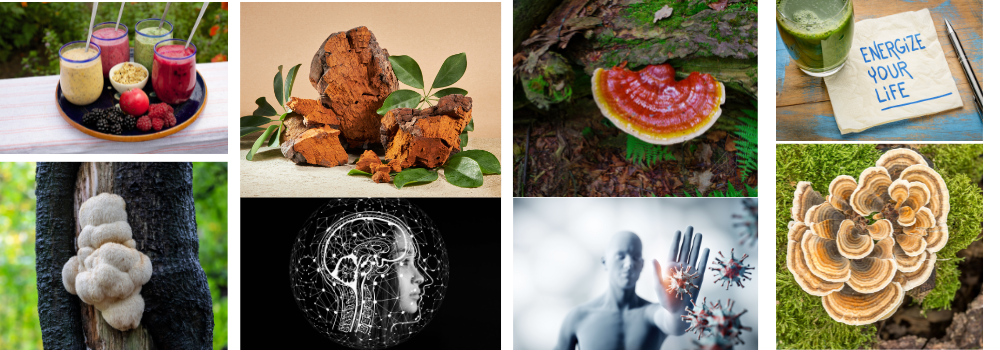

NuHerbs Lab Tested
Andrographis Herb (Chuan Xin Lian) - Cut Form 1 lb. - Nuherbs
Herbal Information for Andrographis Herb in Cut Form

At 1st Chinese Herbs, we offer a curated selection of high-quality medicinal mushrooms to support your health and wellness journey. From boosting immunity to enhancing cognitive function, our lab-tested and organic mushrooms are trusted by customers for their effectiveness and quality. Whether you're looking for Reishi, Cordyceps, Lion's Mane, or more, we have the perfect mushroom to suit your needs.

Medicinal mushrooms are revered for their powerful health benefits. Here’s why they should be a part of your wellness routine:
| Mushroom | Health Benefits | How to Use | |
|---|---|---|---|
| Reishi Mushroom | Supports immune health, stress relief, and longevity. | Brew as tea, mix powder into smoothies, or take in capsule form. |  |
| Cordyceps Mushroom | Boosts energy, improves endurance, and supports respiratory health. | Brew into tea, add powder to soups, or take as a tincture. |  |
| Lion’s Mane Mushroom | Enhances cognitive function, memory, and nerve health. | Use powder in coffee or tea, take as capsules, or brew into tea. |  |
| Chaga Mushroom | Rich in antioxidants, supports immunity, and promotes healthy skin. | Brew into a nutrient-rich tea or add powder to recipes. |  |
| Turkey Tail Mushroom | Supports gut health, immunity, and overall vitality. | Brew into tea or take as capsules or powder. |  |
"The Reishi powder is incredible! I've noticed a big improvement in my sleep and stress levels since I started using it." – Sarah L.
"I’ve been using Lion’s Mane capsules for a month, and my focus has never been better. Highly recommend!" – James R.
Q: Are your mushrooms organic?
A: Yes, many of our mushrooms are organic and lab-tested to ensure the highest quality.
Q: Can I get a Certificate of Analysis?
A: Absolutely! Certificates of Analysis are available upon request for all lab-tested products.
Q: How should I store my mushrooms?
A: Store them in an airtight container in a cool, dry place to preserve freshness and potency.
Parts of Mushrooms
Mushrooms have a variety of different parts. See the diagram on the left to identify what each part of the mushroom is.

| Part of the Mushroom | Description | Visual or Key Features |
|---|---|---|
| Cap | The top of the mushroom, often umbrella-shaped. | Comes in various colors, most commonly brown, white, or yellow. |
| Gills, Pores, or Teeth | Found under the mushroom's cap, resembling a fish's gills. | Key structures for spore dispersal; appearance varies by mushroom type. |
| Ring (Annulus) | The leftover structure of the partial veil after the gills emerge. | Often encircles the stem and can be thin or thick, depending on the species. |
| Stem (Stipe) | The tall structure supporting the cap above the ground. | Provides stability and raises the cap for efficient spore dispersal. |
| Volva | The protective veil remaining after the mushroom sprouts from the ground. | Found at the base of the stem; remnants of the initial growth stage. |
| Mycelium | The root system of the mushroom, made up of thin, thread-like strands. | Extends outward and downward into the soil, gathering nutrients to support the fungus. |
Choosing the right medicinal mushroom supplement
When it comes to choosing a medicinal mushroom supplement, there are a few factors to consider:
Quality and sourcing: Look for supplements that are made from organically grown or wildcrafted mushrooms. This ensures that you are getting the highest quality and most potent mushrooms.
Extraction method: Different extraction methods can affect the bioavailability and efficacy of the mushrooms. Look for supplements that use extraction methods like hot water extraction or dual extraction to ensure maximum benefits.
Certifications: Check for certifications like Good Manufacturing Practices (GMP) and third-party testing to ensure the supplement is safe and free from contaminants.
Don’t wait to experience the incredible benefits of medicinal mushrooms. Browse our selection today and find the perfect product for your wellness goals.
References